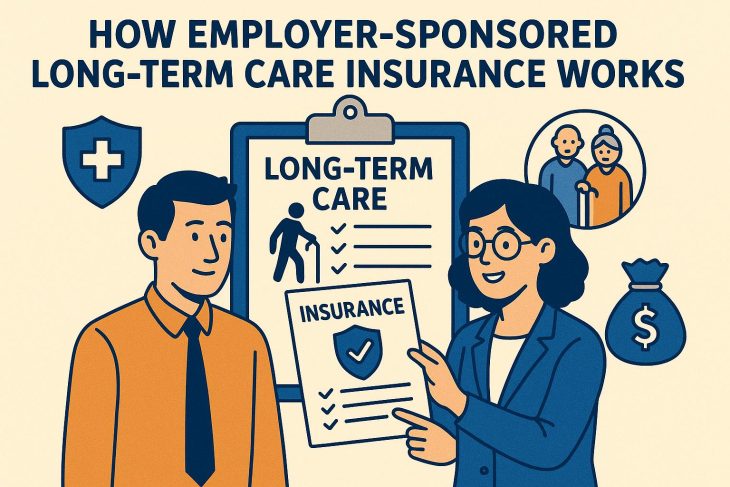
Understanding Employer-Sponsored Long-Term Care Insurance
Long-term care insurance serves as a financial tool designed to cover services not typically included in standard health insurance. These services include assistance with activities of daily living such as bathing, dressing, and eating. As individuals age or in the event of illness or disability, the need for long-term care becomes more prominent. A significant option provided by some employers is employer-sponsored long-term care insurance. This option provides financial and service benefits to employees, potentially reducing the burden of care expenses.
What is Employer-Sponsored Long-Term Care Insurance?
Employer-sponsored long-term care insurance is a type of policy offered by employers as part of an overall employee benefits package. It is specifically designed to help employees manage the expenses associated with long-term care services, whether these services are received at home or in a specialized facility. Such an insurance policy can greatly alleviate the financial pressures employees and their families might face when long-term care becomes necessary.
How Does It Work?
The mechanism behind this insurance involves coverage provided through a group plan. This often results in easier access to the insurance for employees and potentially better rates. This affordability stems from the collective bargaining power inherent in group plans. Simplified underwriting processes further benefit employees by minimizing the number of medical exams or questionnaires required compared to those for an individual policy.
Eligibility and Enrollment
It is important to note that not all employees automatically receive this coverage. Eligibility regulations typically require employees to enroll during scheduled periods, such as when they are newly hired or during annual open enrollment phases. In some instances, employers may extend these coverage options beyond employees to include their spouses, domestic partners, and even parents, broadening the support network that the coverage can provide.
Coverage and Benefits
The specifics of coverage can differ greatly across various plans. Commonly included services are in-home care, adult daycare, assisted living, and nursing home care. An additional benefit that some plans provide includes provisions for home modifications, allowing residences to better meet the care needs of the insured. Understanding the specified limits on daily or lifetime benefits is essential to ensure the selected plan offers sufficient coverage for expected needs.
Costs
The premiums associated with employer-sponsored long-term care insurance are influenced by several factors. These include, but are not limited to, the level of coverage selected, the age of the employee at the time of enrollment, and specific criteria laid out by both the insurer and the employer. Often, employers might absorb a portion of these premiums, presenting a more cost-effective alternative compared to the premiums associated with individual policies, which makes it an attractive benefit for employees.
Advantages and Considerations
One of the most significant advantages of opting for an employer-sponsored plan is the potential for lower costs due to group rates and financial contributions from employers. The simplified enrollment process offered can also benefit individuals who may otherwise struggle to obtain coverage, especially those with pre-existing medical conditions.
Despite these benefits, employees are encouraged to consider the policy terms carefully, paying particular attention to any limitations and exclusions. Given the variability in policy stipulations across different plans, it is imperative for employees to review policy documents carefully. Consulting a financial advisor could provide additional clarity, helping employees ascertain whether a particular plan aligns with their individual needs and long-term care objectives.
Conclusion
Employer-sponsored long-term care insurance is a beneficial component of an employee benefits package, providing essential support and assurance for planning potential future care needs. Understanding the intricacies of how these policies function, as well as recognizing the tangible benefits they offer, can enable employees to make well-informed decisions regarding their long-term care planning. For those seeking additional specifics about the range of available policies and offerings, consulting with HR departments or visiting resources such as longtermcare.gov can offer access to comprehensive government resources and further information.
This article was last updated on: October 9, 2025
